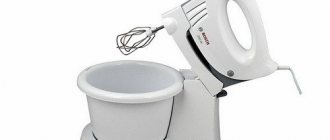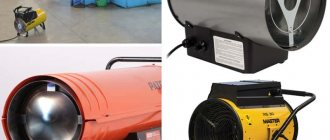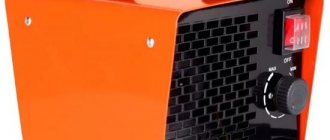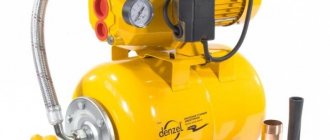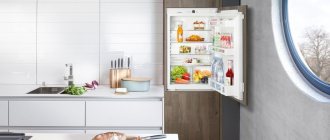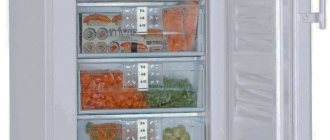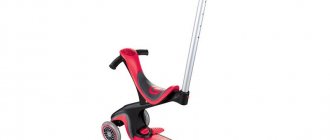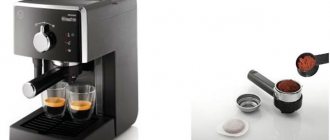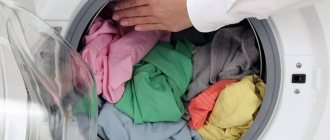Arbitrary movement of air in buildings and structures can have certain consequences in the form of mixing air, and accordingly changes in its temperature, smell, humidity and other properties. To control the corresponding process and avoid drafts, special equipment is used - thermal air curtains. They are energy-saving equipment and allow you to establish efficient operation of air conditioning, heating and ventilation systems in shopping and entertainment centers, production workshops and other facilities where this is necessary.
What is an air-thermal curtain, areas of application, control and functions
The air curtain is a powerful fan capable of creating a strong and directed stream of air. This jet becomes an invisible barrier to the natural movement of air, separating adjacent spaces. At the same time, the air flow does not interfere with the free movement of people. Various objects with increased cross-country ability need to perform the corresponding function. We are talking not only about office, public and industrial facilities, but also about residential buildings.
Thus, the main function of this equipment is to separate zones with different temperature conditions. Cold or, conversely, hot outside air cannot enter the room through open gates, entrance doors and other openings. At the same time, heating or air conditioning systems will operate with a minimum amount of losses, significantly saving energy. That is why the very possibility of using such equipment is a sign of energy saving.
Design and principle of operation
Modern air curtains are not characterized by the most complex design and operating principle, but they have two fundamental differences in the design of the units. They can be with or without a heating function, and the heat source can be electricity or hot water circulating in a radiator.
- Electric thermal curtains
- Water thermal curtains
The device itself is a rectangular metal case made of galvanized or stainless steel sheet. Inside there is a fan, a motor, a control unit, and if the curtain is thermal, then the air heater is an electric heating element or a water heater.
The principle of operation is very simple. A high-speed fan takes air, drives it through the heater, then a dense, significantly accelerated flow of warm air is blown through a special nozzle in the desired direction, creating an invisible door.
Controls and functions
The curtain is controlled using a wired remote control, which is installed next to the device. To automatically control the air temperature, the remote control has a built-in thermostat that turns the heater off and on when the set temperature is reached. Low-power devices with a small installation height, up to 2 meters, are most often equipped with controls located on the housing to reduce cost.
The presence of a thermostat is especially important when installing thermal curtains in vestibules, rooms with a small volume of air, and not so much for the sake of saving energy, but to prevent overheating of the device and burnout of tubular heaters. Some models are equipped with a duplicate remote infrared control panel with a signal receiver in the wall-mounted remote control, or less often in the body of the device itself.
Several fan performance modes are available for control, setting the desired air temperature in the room, as well as selecting the heater power level or turning off the heating function altogether.
Advantages and disadvantages
- Among the main advantages, we can highlight the uniqueness of the device, since nothing alternative has been invented with similar functionality at an affordable price.
- In most cases, installation and connection are quite simple, for models with an electric heat source. The simple design allows you to quickly and easily carry out all necessary maintenance and repair work.
- They are quite economical when operating devices as their main function - creating a barrier for the movement of air masses (fan operating mode without heating the air).
- Additional power required. To heat the air passing through the curtain at high speed, on average 6-9 m/s, a powerful heater is provided. Therefore, before you buy an electric heat curtain, you need to find out whether there is the necessary power reserve in the electrical network. On average, per meter of opening width, you need at least 6 kW to heat the air by 20°C.
- So-called water heat curtains require connection to a heating system. Mixing units are used to regulate the temperature. Not all facilities have such an opportunity; as a rule, these are large enterprises or buildings with their own boiler room.
- The main and only negative is the noise from the fans. All air curtains, without exception, operate quite noisily; this type of equipment should not be placed close to places where people stay for a long time.
Selection rules - numbers, calculations
What do you need to know to make the right choice? Measure the width and height of the doorway. Based on the data received, the device is selected.
With the optimal height everything is quite simple. It is usually indicated in the technical data and passport of the device. Look for a parameter such as the effective jet length.
The maximum installation height must be greater than or equal to this most effective jet length.
When positioned vertically, the width of the opening is taken into account.
The main task when selecting a particular model is to ensure an air speed near the floor or at the end of the door (vertical installation) of more than 2 m/s.
When choosing the width of the curtain, follow a similar rule.
The width of the thermal curtain should be either equal to or slightly exceed the doorway.
In this case, pay attention specifically to the width of the nozzle from where the air flies out, and not to the overall width of the body. In many devices, the nozzle occupies no more than 70-80% of the entire length.
On the side of it there may be on and off buttons, or just a piece of closed plastic.
Naturally, you will not receive any useful thermal air flow from these side places.
Sometimes there is an option when, to save money, they still install a curtain slightly smaller than the total width of the opening. Still, the air flow does not flow strictly parallel from above, but with a slight expansion towards the bottom (by 10-15%).
But for such installation several conditions must be met:
- no drafts
- the presence of a vestibule
- minimal passage through the door
Not everyone has the same requirements, so it is best to stick to the basic rule.
How to choose the calculated thermal power? Here you also need to take into account a number of nuances.
For example:
- Are you installing a curtain just to cut off cold air or do you also want to use it to raise the temperature a little?
- Is the room well heated?
- what is the passage through the opening?
For example, for a small cafe with a vestibule, a 3-kilowatt model will be enough for you. But for a shop of the same area, with the same doors, 9 kW and above will be required.
If you don’t go into all the complications too much, you can use the following formula: 1 kW = 10 m2
According to it, for a standard doorway, a curtain with an installation height of 2-2.5 m and a thermal power of 3 to 5 kW is suitable. The air capacity of the model with conventional doors should be up to 900 m3/h.
For non-standard opening sizes, proceed from the following data:
- up to 400m3/h per 1m2 with ceilings up to 3m
- up to 600m3 per 1m2 with ceilings higher than 3m
When choosing, do not forget that this thing is quite noisy. If you are planning to install a curtain in a cafe or restaurant where you will have pleasant music, then you cannot do without a vestibule.
Otherwise, the noise and hum from the fan will irritate both your workers and visitors. The entire effect of heat conservation will be neutralized.
Also, restaurants and cafes usually install powerful ventilation and exhaust systems. So, if most of the fresh air enters the room through the door, no thermal curtain will save you from the penetration of cold.
An area of discharged pressure will gradually form inside, and air from the street will be sucked into such a “vacuum” pocket, no matter what powerful model you choose.
How to choose a thermal curtain
To correctly select the described device, it is necessary to take into account several basic technical parameters.
- Placement of the device in a horizontal or vertical position;
- According to the heating method (if necessary) - electric heating element or water heater;
- The height of the opening or installation of equipment is determined by the speed of air flow at the exit of the nozzle - the efficiency of the jet.
- The width of the opening determines the length of the device and its power.
Recommendations
The length of the device must match the size of the opening and completely cover it. In terms of the efficiency of the air flow structure, it is best to provide a certain reserve, this is especially true at high-altitude objects, as well as where there are often strong winds. To solve global problems, preference should be given to industrial options. When choosing, it is important to pay attention to the power and connection of the electric heat curtain to the network.
- Electric thermal curtains 220V single-phase
- Electric air curtains 380V three-phase
Each consumer must choose the optimal model for himself, understanding that incorrectly selected equipment will not bring the desired effect. It’s easier to figure out how to choose a thermal curtain with the help of specialists.
Manufacturers of thermal curtains
It is important to pay attention to the equipment manufacturer. The Russian market offers a wide range of domestic manufacturers. The most popular of them are Teplomash (St. Petersburg), Tropic (Moscow), IZTT Izhevsk Thermal Equipment Plant (Izhevsk), on the premises of which equipment under the brands Ballu, NeoClima, Kalashnikov, Royal Clima is produced and assembled , Zilon and other numerous brands that do not have their own production. Foreign analogues, such as General Climate, Frico, Olefini, due to their high cost and inability to compete, were almost completely forced out of the market by domestic manufacturers.
Selecting the heating power of a thermal curtain
This equipment is not a heater, and therefore, if we talk about heating power, the calculation is rather subjective, since this is an energy-saving device that prevents warm air in summer and cold air in winter from entering the room. The technical characteristics of the air-thermal curtain indicate the difference in temperature of the blown and suction flow. In each model, the optimal selection of heater power has already been made. Some manufacturers produce the same models of thermal curtains with heaters of different power, and therefore you can always make the correct selection of the required power.
Installation of air-heat curtain
It is important to choose the right location for the equipment. In this situation, it is impossible to do without studying the technical parameters of the opening itself where installation is planned and a suitable model. The optimal installation method is also analyzed.
According to the installation method, air curtains can be divided into two categories:
- Horizontal thermal curtains for placement above the door
- Vertical thermal curtains placed on any side of the doorway
This is one of the main parameters in choosing the appropriate model. Although most modern devices can be installed in either of two positions, such curtains are called universal and make the choice much easier.
Horizontal placement
Most often, an air curtain is located above the entrance door to prevent even minimal drafts from entering the building or a single room. Fastening is done on the wall in the same plane as the opening; standard brackets included in the kit are used for this. In some cases, due to the design features of the curtain or entrance group itself, fastening is carried out to the ceiling using studs and steel corners, which are purchased separately.
Vertical placement
Special designs of entrance groups or other possible equipment located above the opening do not always allow installation of the curtain in a horizontal position. In such cases, the equipment is placed vertically on the wall - to the left or right of the opening. For special cases where aesthetics are required, manufacturers will always have an option for placing a column-type thermal curtain on the floor.
Equipment from all manufacturers has approximately equal standard dimensions in terms of device length. The most common ones, of which 1000 – 1500 – 2000 mm. In cases where the opening is wider than the device itself, they are installed several in a row and connected to one control unit.
Types of thermal curtains
The heating element in the thermal curtain can be water or electric. Water - a system of pipes through which hot water runs. Electric heaters come in two types: finned heating element (tubular electric heating element), ceramic heater or spiral. You can also find models with gas heaters, but they are only for industrial use.
Water thermal curtains are more economical to operate, but are bulky and difficult to install. Therefore, electric curtains are more often used. They are easier to install above the door, although they consume a lot of electricity to heat the air. Electric thermal curtains can be powered from a 220 V or 380 V network.
Horizontal type electric thermal curtain device
However, the cost of compensating for heat loss when cold air enters the room is much higher. Therefore, installing a thermal curtain powered by electricity allows you to save on heating. This equipment is justified if the doors to the premises are opened at least 5 times a day or they remain open for at least 40 minutes a day.
Depending on the installation method, thermal air curtains can be vertical or horizontal. Vertical ones are placed on the sides (maybe one or two), horizontal ones - above the doorway. Please note that horizontal models cannot be mounted vertically. The bearings installed in them are not designed to withstand the uneven load created by the fan rotor in this position. After a few months (3-4) the bearings will fail and the air curtain will stop working. At the same time, vertical models can be installed horizontally. Their bearings in this position operate in “light” mode, as they are loaded much less.
Recommended: Why do you need an asphalt seal coat?
Ways to position the electric heat curtain: one-sided and two-sided side, horizontal
Typically, horizontal electric air curtains are mounted on the wall above the door, but there are also models with ceiling mounting. The vertical type is most often mounted on walls, but there are also column models. They are not attached to the walls, only to the floor. They are also available in a housing with an increased level of protection (IP54), which allows them to be used in car washes, saunas, and swimming pools.
Thermal curtain for the front door: purpose and design
A type of climate control equipment is a thermal curtain, which is an oblong metal casing with an internal fan, heating device, nozzle and other elements. A complex of such parts is connected into a whole system inside the housing, which ensures prompt heating of the air, the flow of which enters above the front door, as if cutting off the cold from the outside.
Inside the housing, the air is heated and enters the room
Each component of the system performs a specific function. For example, the heating element in electric models is presented in the form of a heating element, around which air is circulated using a fan, and when heated, it is discharged outside through nozzles. The speed of such an air circulation can be adjusted depending on the temperature required for the room. When moving, the air is cleaned through a filter from dust, dirt and debris. All elements are enclosed in a housing equipped with mounting holes.
The design of the equipment includes elements with a simple operating principle
There are water models of thermal curtains. Such devices use a heater as a heating element, and operation requires a connection to a hot water supply. The noise level of the device is quite low compared to electric options, which are in demand and are often installed in shops and public spaces.
The equipment can provide vertical or horizontal air supply. In the first case, the device is mounted above the doorway along its entire width.
Horizontal placement of the thermal curtain is popular and convenient
If horizontal airflow is required, then a thermal curtain is attached to each side of the opening along its entire height. It is possible to install the element on only one side, but this requires a device with high power and high operating speed.
What are the differences between electric heat curtains?
Electric thermal curtains, as a rule, can be found at the entrance areas of hypermarkets and shopping centers. The doors of these objects open several times a minute, but at the same time, a reliable thermal barrier allows you to maintain a normal microclimate in the room even in frosty weather. It must be remembered that the main task that the installation of a thermal curtain solves is not additional heating of the internal air, but its cutting off from the external air masses. This ensures a normal indoor microclimate, despite any weather conditions.
Advantages of thermal electric curtains:
- equipment of this type is lightweight;
- simple installation;
- no risk of flooding or explosion hazard.
In addition to the advantages, this type of thermal curtains also has disadvantages:
- large volumes of electricity consumption;
- risks associated with the operation of electrical equipment that is energized.
Installing thermal electric curtains at the entrance group of public buildings allows you to reduce heating and air conditioning costs and ensure a stable indoor microclimate. The market offers a wide selection of climate control equipment of this type with different technical characteristics. As noted above, the main purpose of such equipment is to form a barrier that prevents the passage of street air into the room.
Thermal electric curtains in most cases have IP20 protection, which protects visitors from accidentally touching the equipment with their hand, turning off the device. In addition, emergency shutdown of the air curtain occurs when the equipment is overheated. Such protection is present in all types of electric curtains. Some manufacturers provide their models with moisture protection - IP54. Such devices are resistant to corrosion (their frame is made of stainless steel or galvanized steel) and can operate in conditions of high humidity. The design of electric thermal curtains includes a heating element that is powered by electric current. There are two types of such elements:
- STITCH is produced on the basis of wire or metal tape. Such elements heat up quickly and have low cost.
- The heating element heats up more slowly, but can produce a higher temperature. It is made from metal in the form of tubes of various shapes, on which a grille is attached, which increases the efficiency of thermal energy transfer.
Air heated by TENs or STITCH is accelerated by thermal fans in one direction, which allows you to create an air barrier that can be compared to a falling water flow. When choosing a thermal curtain of this type, you should pay attention to the presence of a tubular heater, which can provide higher performance. Another useful feature is remote control of the device. In addition, the heater must be separately regulated, which will allow the air curtain to be used in the summer.
What are gas thermal curtains
Relatively recently, a new type of climate control equipment has appeared on the market - gas thermal curtains. In a fairly short time, they have become very popular for arranging facilities where there is no technical ability to connect other types of curtains. When choosing this equipment, one should take into account its explosion hazard and the fact that the gas has a suffocating effect, as it displaces oxygen from the air, therefore the operation of gas curtains must be carried out in strict compliance with safety regulations.
Advantages of thermal curtains using gas fuel:
- accessible and inexpensive energy carrier;
- efficient operation over a wide temperature range;
- no risk of system freezing;
- formation of a homogeneous air curtain;
- sufficiently high air flow density;
- equipment can operate on different types of gas fuel.
As noted above, the main disadvantage of climate control equipment is the high flammability of gas and its danger to human health. Unqualified connection of such curtains increases the likelihood of emergency situations.
